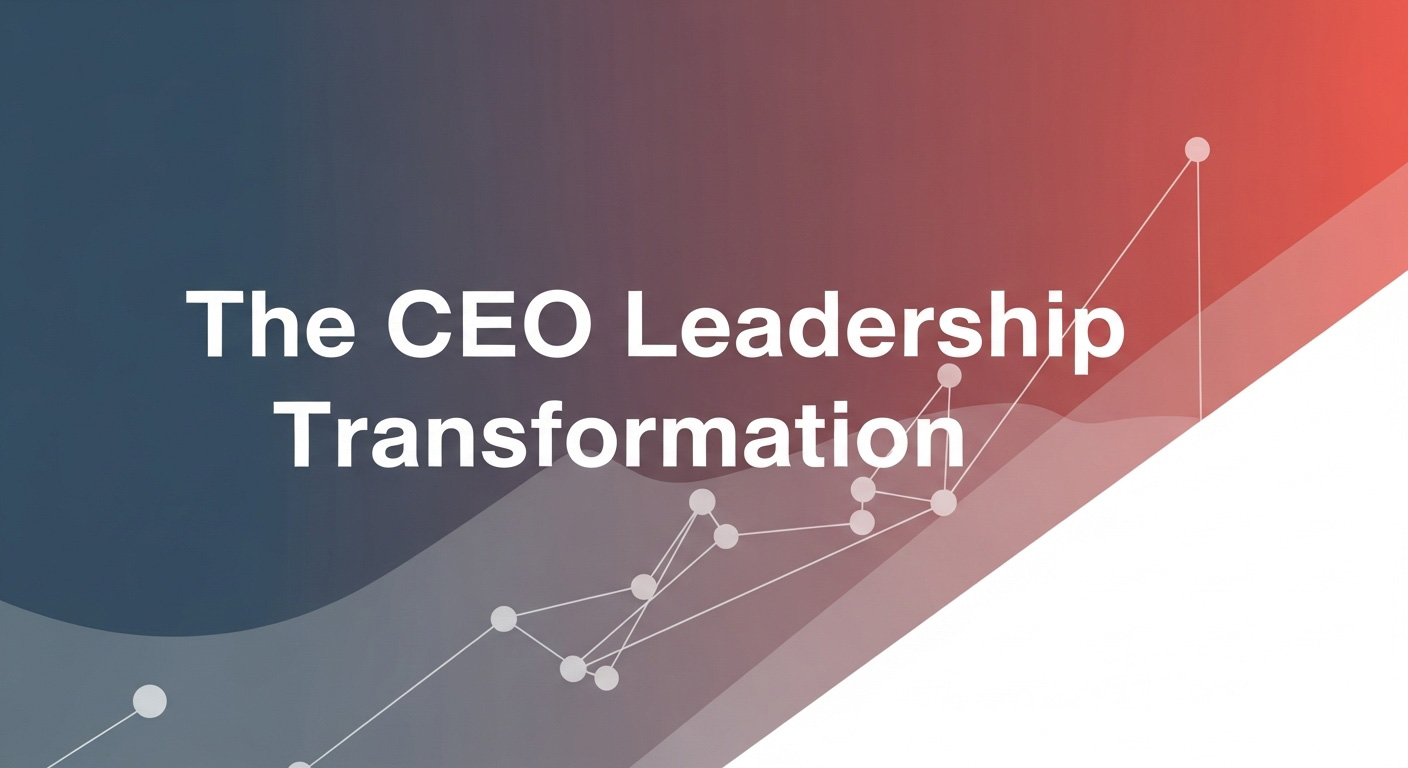The CEO Leadership Transformation:
From Hierarchy to Self-Management and the Rebirth of Modern Leadership
Moving from traditional hierarchy to self-management requires more than just restructuring. It demands a complete transformation of leadership identity. This process, often referred to as CEO leadership transformation, is one of the hardest yet most rewarding journeys a leader can undertake. For many, it begins with CEO coaching that challenges not just management habits but deep-seated beliefs about control and success.
The Hidden Challenge Behind Organisational Change
The most significant barrier to moving from a traditional hierarchy to a self-managing organisation is not structural. It is the CEO’s own ego and need for control. The essence of CEO leadership transformation lies in releasing long-held assumptions about authority, power and certainty.
The real work is not about redrawing organisational charts or introducing new management frameworks. It is about evolving your own identity as a leader. This transition feels less like a corporate initiative and more like a deep personal awakening.
Redefining the CEO’s Role
Imagine you are the CEO of a successful, growing company. You have built a robust hierarchy, a clear chain of command and a team that looks to you for final decisions. It is a model that got you here, but lately you are feeling the strain. Innovation is slowing, decisions are getting bogged down, and the organisational chart, once a source of pride, now feels like a cage.
This is where the CEO leadership transformation truly begins: when the leader recognises that the old model of control no longer serves the system’s evolution. The challenge is not just operational, it is psychological.
You may have heard of self-managing organisations like Semco, Morning Star and Haier. Their success stories are compelling, but behind each of them was a leader who underwent this same inner metamorphosis.
The Inner Game of CEO Leadership Transformation
Before any structural change, a CEO must embark on deep inner work. This is the real foundation of CEO leadership transformation – the rewiring of how a leader relates to power, trust and self-worth. This is where CEO coaching becomes a powerful catalyst, helping leaders confront the fears and patterns that keep them anchored in control rather than empowerment.
The Inner Work Includes:
- Ego Work: Releasing the need to be “the fixer” or “the decider”.
- Emotional Literacy: Understanding the fears of chaos or irrelevance that drive control.
- Mindset Reframing: Shifting from “I lead by directing” to “I lead by enabling”.
This is where the metaphor of moving from chess master to chessboard becomes powerful. The leader stops moving the pieces and instead becomes the space where intelligent play can happen.
The Practical Shift: From Command to Cultivation
The inner transformation must show up in new, tangible behaviours. It is the difference between talking empowerment and designing for it. Leaders undergoing CEO leadership transformation often notice how their language, reactions and structures all change – from holding power tightly to distributing it consciously.
| Aspect of Leadership | Traditional CEO | Self-Managing CEO |
|---|---|---|
| Primary Role | Commander & Decision-Maker | Coach & System Architect |
| Focus | Directing outcomes | Creating conditions for autonomy |
| Relationship with Power | Hoarded cautiously | Distributed lightly |
| Communication | Provides answers | Asks meta-questions |
| Response to Mistakes | Finds fault | Improves the system |
This is not a minor adjustment; it is a total rewiring of leadership behaviour.
The Journey of Leadership Transformation
This shift does not happen overnight. For many leaders, it unfolds over months of deep work and iterative practice.
- Months 1–2: The Inner Foundation
Exploring leadership identity and uncovering limiting patterns. - Months 3–4: Modelling and Building
Practising “let-go leadership” and co-creating distributed decision-making systems. - Months 5–6: Embodying the New Paradigm
Navigating emotional fallout and solidifying a new leadership identity rooted in trust and autonomy.
At each stage, a thinking partner or coach can serve as a mirror, helping you integrate insight into embodied practice.
Why You Cannot Do This Alone
Even the most capable CEOs are blind to their own reflexes. The need to control and the addiction to being indispensable are patterns that are invisible from the inside. A trusted guide or reflective partner helps you see where trust leaks, where fear drives decision-making, and how to stay anchored in purpose when the system destabilises.
This is not about weakness. It is the essence of wisdom. The mark of mature leadership is the willingness to be seen, challenged and transformed.
The Payoff: A Smarter, Self-Managing Organisation
Ultimately, CEO leadership transformation leads to more than personal growth. It rewires the entire organisation. When leaders stop trying to be the smartest person in the room and start building the smartest room possible, something extraordinary happens. The company becomes faster, more resilient and more innovative.
The final breakthrough is seeing yourself not as the architect of control, but as the gardener of autonomy. You stop building cages and start cultivating ecosystems. In today’s complex business landscape, that is not just evolution, it is survival.
